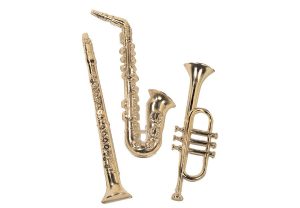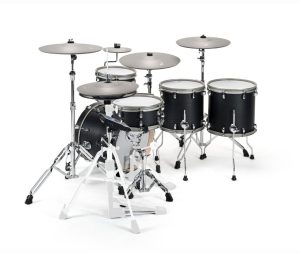Uncategorized
The Best Instruments for Music Therapy
The Best Instruments for Music Therapy
Music therapy is a powerful and therapeutic tool used to improve mental, emotional, and physical well-being. Whether it’s for individuals with anxiety, depression, autism, or even chronic pain, music has the unique ability to connect with people on a deep level. One of the key elements of music therapy is the use of instruments to facilitate healing, self-expression, and relaxation. At Onebestluxetexas, we understand the impact that music can have, which is why we offer a variety of instruments perfect for therapeutic use. This guide will highlight the best instruments commonly used in music therapy and explore how each can aid in different therapeutic goals.
1. Drums
Why Drums Work in Music Therapy:
Drums are often used in music therapy because of their strong rhythmic qualities. The act of drumming can be both physically engaging and emotionally releasing. Drums encourage patients to connect with their bodies and express their emotions through rhythm.

- Benefits of Drumming:
- Stress Relief: Drumming can be an excellent way to release tension and reduce stress.
- Physical Coordination: Playing the drums requires coordination between the hands, arms, and even legs, making them a great choice for motor skill improvement.
- Emotional Expression: The rhythm and intensity of drumming can help individuals express emotions they might otherwise struggle to articulate.
- Types of Drums for Music Therapy:
- Hand Drums: Simple hand drums like the djembe or bongos are great for individual sessions and group work.
- Frame Drums: These drums are versatile and are often used in group settings, encouraging collaborative playing.
- Congas: These larger drums create a rich, resonant sound and are ideal for rhythm exercises.
2. Piano/Keyboard
Why Pianos Work in Music Therapy:
The piano or keyboard is one of the most versatile and widely used instruments in music therapy. It allows therapists and patients to explore both melody and harmony, offering a range of emotional expression from soft and soothing to bright and energizing.
- Benefits of Playing Piano in Therapy:
- Cognitive Stimulation: Learning to play the piano requires focus, coordination, and memory, which can stimulate brain activity and enhance cognitive function.
- Emotional Release: Playing both major and minor chords can help express a wide variety of emotions, making the piano a great choice for emotional expression.
- Relaxation: Playing calm, slow pieces can induce a sense of calm and reduce anxiety.
- Types of Pianos for Music Therapy:
- Digital Pianos: These are great for portability and versatility, offering a wide range of sounds and effects that can enhance the therapeutic experience.
- Acoustic Pianos: Traditional pianos provide a rich, full sound that can evoke deep emotional responses.
3. Guitar
Why Guitars Work in Music Therapy:
The guitar is an accessible and widely loved instrument that offers a great balance of simplicity and complexity. It’s perfect for therapy because it can be used for both active playing and soothing background music.
- Benefits of Guitar Therapy:
- Ease of Access: Unlike many other instruments, the guitar is relatively easy to pick up, making it ideal for beginners and people of all ages.
- Expression: The guitar allows for both solo play and accompaniment, enabling patients to express themselves through both melody and rhythm.
- Social Engagement: Group guitar sessions encourage interaction, teamwork, and communication among participants.
- Types of Guitars for Music Therapy:
- Acoustic Guitars: These are great for simple strumming and chord practice, as well as for softer, relaxing sessions.
- Electric Guitars: These provide a more modern sound and can be used for a variety of therapeutic techniques, including sound exploration.
4. Xylophone and Other Mallet Instruments
Why Xylophones Work in Music Therapy:
Xylophones, marimbas, and glockenspiels are percussion instruments that use mallets to strike tuned bars to produce sound. These instruments are often used in music therapy for their clear, pleasant tones and ease of use.
- Benefits of Mallet Instruments in Therapy:
- Sound Therapy: The bright, clear tones of mallet instruments can help calm patients and focus their attention on the music.
- Motor Skill Development: Playing mallet instruments requires hand-eye coordination and fine motor control, making them beneficial for children and those recovering from injury or surgery.
- Multisensory Stimulation: These instruments provide both auditory and tactile stimulation, making them perfect for patients with sensory processing issues.
- Types of Mallet Instruments for Music Therapy:
- Xylophone: The bright, crisp sound of the xylophone is soothing for many individuals and ideal for group settings.
- Marimba: Larger and deeper in tone, the marimba offers a fuller sound that can be used to convey a variety of emotional states.
- Glockenspiel: With its high-pitched, bell-like sound, the glockenspiel is often used to engage children and individuals with developmental disabilities.
5. Flute
Why Flutes Work in Music Therapy:
The flute’s light, airy sound can create a calming, peaceful atmosphere, making it a fantastic instrument for relaxation and stress relief. Its melodic tones are perfect for patients seeking a more meditative experience.
- Benefits of Flute Therapy:
- Breath Control: Playing the flute helps improve breathing and lung capacity, making it an ideal choice for individuals with respiratory issues.
- Emotional Healing: The flute’s gentle, flowing sound can help soothe anxiety and foster emotional expression.
- Cognitive Improvement: Playing the flute requires focus and mental effort, which can enhance cognitive skills, memory, and concentration.
- Types of Flutes for Music Therapy:
- Concert Flute: Traditional and widely recognized, it’s suitable for both solo and ensemble therapy sessions.
- Native American Flute: Known for its spiritual and healing qualities, this flute has a deeply resonant sound that is often used in therapeutic practices focused on relaxation and emotional well-being.
6. Singing Bowls
Why Singing Bowls Work in Music Therapy:
Singing bowls, often used in sound therapy and meditation, have a soothing, resonant sound that can help individuals relax and focus. These bowls are typically made of metal and are played by rubbing a mallet around the rim to create a continuous, harmonic sound.

- Benefits of Singing Bowls:
- Deep Relaxation: The vibrations produced by singing bowls are believed to promote relaxation, reduce stress, and improve mood.
- Sound Healing: The harmonic overtones produced by singing bowls are used to balance energy and promote healing in the body and mind.
- Stress Reduction: The peaceful sounds of singing bowls are perfect for helping patients unwind and release tension.
7. Harp
Why Harps Work in Music Therapy:
The harp’s rich, soothing tones are known for their calming effect. The instrument’s ability to produce both melodic and harmonic sounds makes it a wonderful choice for creating an emotionally supportive environment.
- Benefits of Harp Therapy:
- Calming and Healing: Harp music can promote relaxation and emotional balance, making it perfect for patients dealing with stress, anxiety, or trauma.
- Emotional Expression: The harp’s melodies evoke deep emotional responses and can be a powerful tool for helping patients express feelings they may not be able to articulate with words.
- Cognitive Benefits: Learning to play the harp can improve memory, concentration, and fine motor skills.
Conclusion
Choosing the right instrument for music therapy depends on the patient’s specific needs and therapeutic goals. At Onebestluxetexas, we offer a wide selection of instruments that can support different aspects of therapy. Whether you’re using drums for rhythmic expression, a piano for emotional release, or a flute for relaxation, each instrument offers unique therapeutic benefits that can help improve well-being. Incorporating music into therapy can be a powerful tool for healing, personal growth, and emotional connection.

